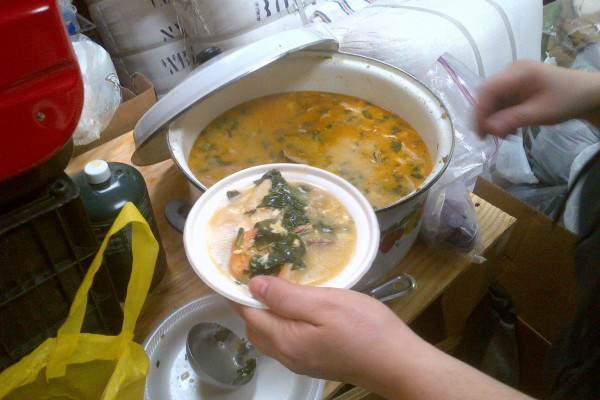When the news of Hurricane Sandy was first mentioned, I didn’t think it would be so catastrophic. I remember listening to the strong winds beat against my window. I was scared the window would break, or the tree in front of our building would fall. Thankfully, neither of those things happened. The day after the storm, I went outside to document Sandy’s aftermath. There were some trees down in a nearby park, some store signs ripped or down, and a lot of debris scattered on the street. It felt eerie; hardly anyone was outside. When I watched the now 48-hour storm coverage, I couldn’t believe what I was seeing. Far Rockaway, Queens, and parts of Staten Island looked like a war zone. Parts of my home borough of Brooklyn no longer looked recognizable. Even Manhattan, a borough that is constantly busy, was still and under water. My heart sank. I cried.
I became worried for my friends, many whom lived in those most affected areas. I felt helpless, because our transit system was shutdown. Many of the train stations were flooded. Buses weren’t running initially. When bus service resumed, it didn’t run on its regular schedule. Instead, many routes were rerouted. Some areas of the city were inaccessible. Buses replaced train routes, which led to long lines, overcrowding, and frustration. There were many volunteer opportunities. I wanted to participate, but couldn’t for two reasons: inaccessibility and physical ailment. So, I prayed instead. I made calls and checked on the people I love. I kept the news on my TV, and tweeted reporters wishing them safety and wellness. Some of them are my friends. I was worried about them too.
By late November into December, I participated in several volunteer projects. I visited Coney Island and Red Hook, Brooklyn, Far Rockaway, Queens, and Midland Beach, Staten Island. I assisted in bulk distribution, clothing sorting/donations, and food pantries. All were moving experiences, but nothing prepared me for what I saw in Far Rockaway. Seeing piles of debris along sidewalks, burnt buildings, sand everywhere, were things that hit home. All I kept thinking was, within the debris were people’s lives that are now destroyed. A dear friend of mine lost her home to Sandy. Where I stood next to the burnt rubble was remains of her home. I videotaped the experience holding back tears as I spoke. I called her to let her know I was there. There was no answer. I left a voicemail. Phone signals were down throughout the area. Another harsh reality of how bad things were out there.
I was with volunteers of Occupy Sandy. They were gracious enough to drive me around the large peninsula to volunteer and document what we saw. I spoke to residents and other volunteers from different organizations about their thoughts. Many spoke quietly saying they are in disbelief, while others just nodded in sadness. I hugged some of them saying, “You are not alone.” When going on the beach, I was devastated to see no boardwalk. The boardwalk is an iconic feature of Rockaway Beach. That day, there was nothing left except piles of sand and the shoreline. I was speechless. By evening, there was silence. It was a long day. It was a sad day. I never heard back from my friend. I didn’t hear from her until days later. Just the sound of her voice told me all I needed to know.
It was a year ago that Sandy made her presence known. However, I still feel her presence. As a city, we were resilient and helped get things back on track. However, there is more work to do. There are residents who are still displaced, many who are living in shelters. Some residents are having trouble rebuilding their homes, because of insurance issues or hard economic times. Unemployment is still a major issue and many New Yorkers lost jobs during Sandy. There is government assistance, but that can only help but so much especially in neighborhoods of high poverty levels prior to the storm. The city has made efforts in being better prepared if another storm, like Sandy, occurred. Yet, money and reconstruction are major factors in making this a reality, not to mention damage done to parts of the subway system. One major line, the R train is no longer running from Brooklyn into Manhattan due to damage to its tunnel. The South Ferry station was so badly flooded it is still being fixed. As for the badly affected areas, there is some improvement. Far Rockaway is still reeling from the storm, as well as Staten Island and Coney Island, Brooklyn.
I believe Hurricane Sandy will be etched in our minds for years to come. It has taught us the importance of neighbor helping neighbor, volunteerism, and resiliency. For me, I learned not to take things for granted. My home wasn’t affected, but it affected my life in many ways. I have taken a personal step to pursue the career of human services, and continue volunteering in disaster relief. I’ve always loved helping people, but after Sandy, I am more determined to do more for communities in need. In unity, there is strength.
